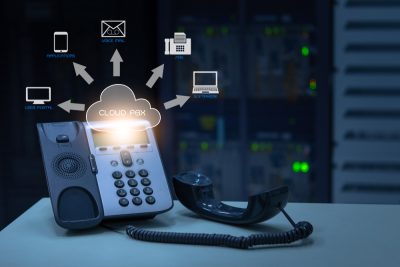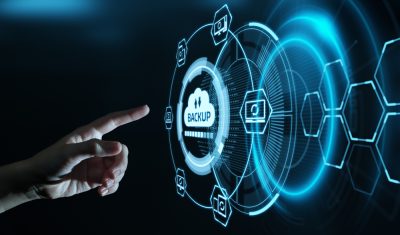Highlights:
- Agencies can swiftly and independently reconfigure and redeploy the modular components by deconstructing and re-architecting applications into a collection of microservices.
- According to research by the Cloud Security Alliance, 90% of CIOs had at least one disrupted or failed modernization project.
The need to adjust to the requirements of a shifting market cannot be overstated enough. Cloud-native applications help companies create digital platforms that boost efficiency, speed up innovation within the company, and increase revenue.
This means that cloud-based enterprise application modernization services are essential for future-proofing IT to meet the needs of the digital age. It has demonstrated its value to businesses by delivering scalability, cost savings, and security.
Today’s businesses prefer cloud computing because it allows them to utilize their existing on-premises expertise better.
Modernization is essential to make the most of new technology and adapt to the evolving needs of businesses. Realizing the benefits of cloud modernization requires an all-encompassing strategy that considers apps, infrastructure, and services.
What is Cloud Application Modernization?
Modernization of cloud-based applications is a term that is frequently used and often inaccurately. It is insufficient to migrate existing infrastructure to the cloud using a lift-and-shift methodology.
Unlocking the full benefits of the cloud is a continual, iterative process that requires a comprehensive reevaluation of the application portfolio.
With older cloud-based apps, modifying or scaling a component necessitates updating the entire application, like running the same on-premises.
Agencies can swiftly and independently reconfigure and redeploy the modular components by deconstructing and re-architecting applications into a collection of microservices.
These can be improved with cloud-native technologies such as containerization, serverless architectures, and DevOps.
What are Common Types of App Modernization?
The most common methods of application modernization include:
- Rehosting: Rehosting, also called “lift and shift,” entails shifting software or servers from the current environment to a public cloud infrastructure. Rehosting is the conventional approach for companies just beginning their modernization journey. This option does not necessitate changes to the code, features, or functions. Data is transferred to the cloud while business logic is maintained.
- Refactoring: This technique of application modernization involves rewriting major portions of a legacy application’s underlying code to improve its performance in a new environment, typically the cloud. It assists in eliminating technical debt and enhancing nonfunctional features.
- Replatforming: As an alternative to rehosting or refactoring, re-platforming simply transfers preexisting cloud-based apps to a new cloud service provider without making any substantial changes to the original application. The term “re-platforming” refers to updating an application to communicate with a cloud-native managed database, switching the OS or middleware it uses, or packaging the application in a container. Companies can boost scalability and developer efficiency through re-platforming.
- Replacing: It is important to consider decommissioning an application when it is no longer required in a cloud environment. Applications should be replaced when their functionality is duplicated elsewhere in the environment, they are of little value, or it is more cost-effective to replace them than to move them.
How can Cloud Modernization Help?
To modernize an application further means breaking down the application into pieces and then taking each part and building it to gain efficiencies and reduce costs.
Modernizing your data swiftly transforms your business into one driven by analytics and data. Modernization is the key to getting all the long-term value and benefits of running your IT infrastructure and applications in the cloud.
That means you need to keep looking at your infrastructure, cloud applications, and services to ensure they’re helping you reach your business and IT goals and working as well as they can.
Businesses must update their apps, infrastructure, and data to realize their full potential.
- Modernize your apps: Moving your apps to the cloud would save money and fix technical debt problems. But how much would your users and employees use it? You need to update your cloud-based applications to get the most out of the cloud ecosystem.
- Modernize the infrastructure: As software-defined infrastructure takes over the world, working in the new “infrastructure as code” system is important. Modernizing infrastructure is important in this kind of setting because it allows for more automation and management based on intelligence, which can cut costs.
- Modernize your data: Data is the third main part of a strategy for modernizing. On-premises data is difficult, expensive, rigid, and hard to keep up with in organizations today. On the other hand, data on the cloud is safe, easy to scale, flexible, and easy to move around.
Why is Cloud Modernization Important?
Businesses can migrate their aging on-premises software to the cloud with modernization.
By doing this, you may benefit from certain advantages, including –
- A quicker time to market
- Increased scalability
- Flexibility
- Cheaper costs
Application modernization improves workflow and boosts productivity for enterprises.
Trends in App Modernization
When coming up with a plan for application modernization, keep the following trends in mind:
- Multi-cloud environments: Multi-cloud refers to using multiple public cloud service providers for virtual data storage or computing power resources, with or without private cloud and on-premises infrastructure. According to Gartner, multi-cloud strategies are now more of a question of when than if. Many enterprises have 70% of their cloud portfolio with one provider and diversify the remaining 30%.
- Hybrid-cloud environments: A hybrid cloud is a combination of public cloud, private cloud, and on-premises infrastructure. With data currently held in on-premises data centers, 77% of business global infrastructure decision-makers who are planning, adopting or updating cloud infrastructure report being in a hybrid-cloud environment, according to Forrester.
- Containers and orchestration: One popular way to package, deploy, and manage applications and workloads is with containers and orchestration. Even though you can put a legacy app in a container, containers are best for development and operations that are less tied together (i.e., microservices).
How Can We Do It?
Even while the rationale for cloud application modernization in state and local governments is compelling, it can be challenging to implement.
According to research by the Cloud Security Alliance, 90% of CIOs had at least one disrupted or failed modernization project.
To maximize chances of success, agencies must take time to plan, navigate, engineer, and incrementally execute their cloud app modernization project.
The following steps are an excellent place to start:
- Know the application portfolio:
Most state and local governments have a massive collection of software resources that they can use. Some may have been made to run on mainframes in the early days of computers. They may have been written in languages like COBOL and assembler, which are now outdated and complex to keep up with because the programmers who know how to use them are getting close to retirement age. Some apps are essential to the mission, but others have been forgotten.
It’s essential to keep track of what hardware apps run on, if they depend on each other, what language they were written in, how old they are, and if they pose any known security risks. Since doing this by hand takes much time, many companies buy software to make the process easier. No matter what method you use, try not to take shortcuts during the discovery process. Doing so can ruin any future efficiency gains.
- Remove unused software:
Once a complete picture of the agency’s application portfolio is ready, it’s essential to eliminate unused and out-of-date software. State and local governments are known for keeping old software for a long time. This makes it much easier to keep track of and manage the assets that are still left.
- Consider future needs and goals:
Cloud-native apps provide advantages like nearly limitless computational power, AI-driven tools, and plenty of storage. Agencies must consider translating these extensive capabilities into concrete operations to reap these advantages.
- Find quick wins:
Avoid trying to modernize every application at once since it will be chaotic. Instead, choose the outcomes that come to you quickly. This could entail updating programs to address urgent issues, perform tasks more quickly, or even lessen significant security flaws. Remember that these choices should be supported by knowledge and data.
- Create a roadmap that includes both the overarching infrastructure and individual app:
It will be easier to avoid unpleasant shocks if you have a clear plan (both macro and micro).
- Make ongoing improvements:
You can’t just set up a portfolio of cloud-native apps and forget about them. To track performance, ensure that app data is collected throughout the tech landscape.
The Bottom Line
Modernizing cloud apps for state and local governments will take much work. But to increase resilience, guarantee ROI, and boost productivity, IT decision-makers must make it happen.
The process can be streamlined by choosing a partner with the required expertise, technology, and employees, which will reduce setup times and upfront costs.











